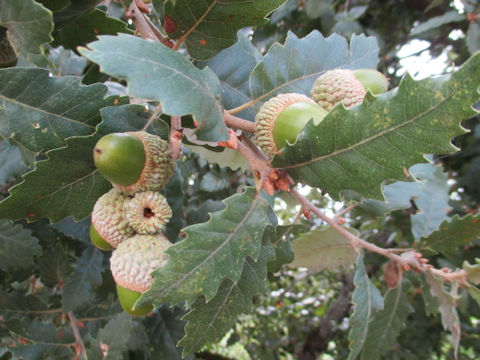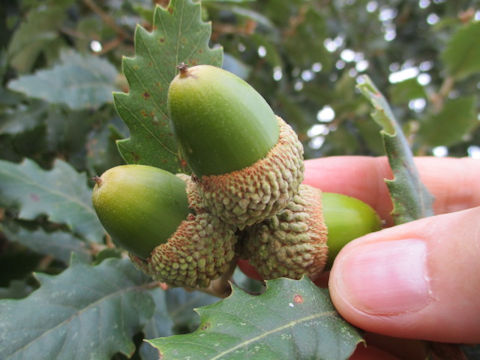|
|
|
|
[Index]
[Back] |
  |
|
|
|
イベリア半島とアフリカの北西部に分布しています。おもに亜熱帯バイオームの混交林に生え、高さは20メートルほどになります。樹皮は灰褐色です。葉は楕円形で長さ4〜10センチ、濃緑色から灰緑色で光沢があり、縁には不規則な鋸歯があります。ふつう冬の半ばから終わりにかけて落葉します。3月から4月ごろ、尾状花序をだして花を咲かせます。果実は堅果で、2〜2.5センチの大きなどんぐりになります。 |
|
|
ブナ科コナラ属の落葉または半常緑の高木で、学名は Quercus faginea。英名は Portuguese oak。 |
|
|
The Portuguese oak (Quercus faginea) belongs to Fagaceae (the Beech family). It is a tall deciduous or semi-evergreen tree that is distributed in the Iberian Peninsula and northwestern Africa. It mainly grows in mixed forests in subtropical biomes, and can grow to a height of around 20 m. The bark is grayish brown. The leaves are elliptic, 4 to 10 cm long, dark green to grayish green and glossy, with irregular serrations on the edges. The leaves usually fall off in the middle to end of winter. In March and April, it produces flowers in the form of a catkin. The fruit is a nut, and it becomes an acorn that is 2 to 2.5 cm in size. |
|
|
ポルトガル・セントロ地方レイリア市にて、2024年08月13日撮影。(photo by Yumi Gunji) |
|
|
|
Shu Suehiro |